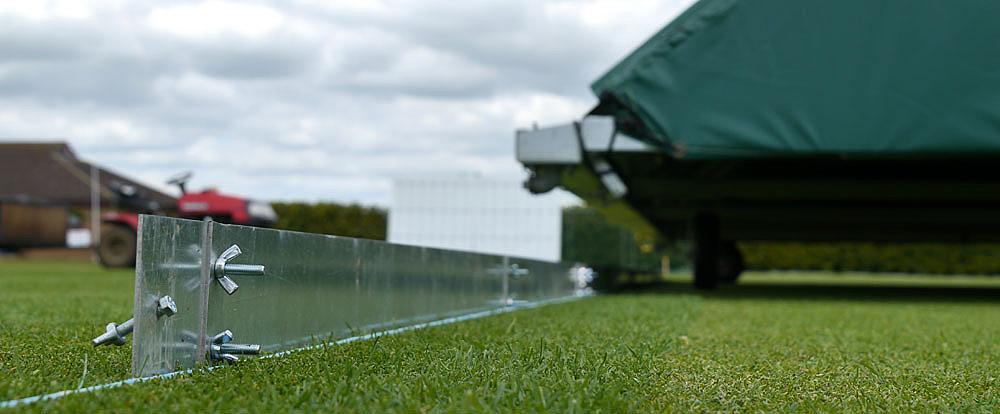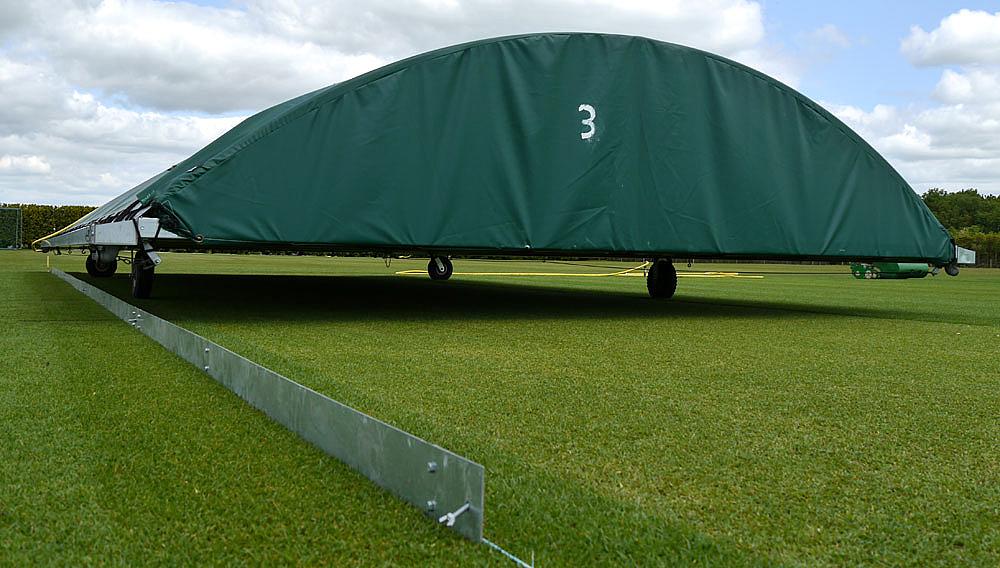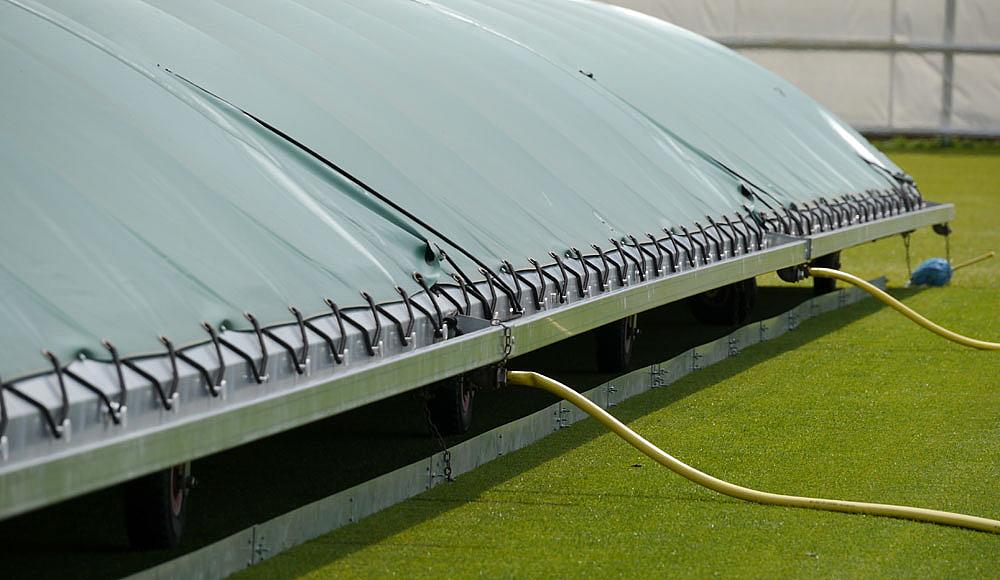Protect your wicket & save money with the Durant Run Bund
If your club is looking for a cost-effective and simple way of stopping excess water getting onto your square, then Durant have an answer with their new Run Bund wicket protection system.
Keen to ensure as many clubs "get the game on" as possible, the Run Bund has multiple benefits - wicket protection, disease prevention and can save money.
The Run Bund is a set of steel strips that are joined together and tapped in alongside the wicket, forming a barrier against water getting onto the pitch - which no club needs at any time of the year.
They provide 21 metres of coverage as nine strips that are 8 feet long and 75mm high so bowlers' landing areas can also be supplied. If your pitch is uneven, shorter 4-foot long strips can also be provided.
And the Run Bund is already helping clubs, one of which is Grantham Cricket Club, where Keith Exton is head groundsman and has been using the Run Bund already.
He explains how the system works and why he sees it as an essential piece of cricket ground equipment for any club.

Durant Cricket Run Bund Pitch Protection benefits clubs & wickets
The Durant Cricket Run Bund
What is it?
A set of galvanised metal strips that you install alongside your wicket
What are the benefits?
Stops water getting on the pitch, improves the health of your wicket, allows you to water the square and leave the wicket, cuts down on labour, cuts costs, easy to install and use
How much do they cost?
A set of nine strips is £295 + VAT
Where can I find out more?
"The Run Bund has been engineered specifically for grass roots cricket to save a lot of sheeting,” Exton says.
"Most clubs haven't got the labour or the manpower to deal with big flat sheets - 30 or 40 footers - so this in itself takes that problem away but also lets the rest of your square have a drink but saves your match pitch from water running underneath the covers.
"Even if you've got smaller sheets you could have a 10-foot sheet by the side which is manageable and then put these bunds out on the other side of the 10-foot so you've got the bowlers' run-ups safe as well.
"To stop the water running is the most important thing because invariably all squares have got some kind of fall on them, whether they are with play or across play, and that in turn always seems to run underneath the covers on a length - always. I don't know why, but it does!”
As flat sheets can be expensive, labour intensive, and cause damage to the health of the wicket, Exton believes the Run Bund is an excellent alternative.
"A set of nine comes out at £295 plus VAT. In comparison with flat sheets, a 40-foot flat sheet climate cover you will be paying £3,500 + VAT," he explains.
"If you can do away with sheets you do away with disease problems, you do away with manpower and your grass tends to be a lot healthier if it does get a drink
"If there is torrential rain about and you want to save a match, you've got to cover but for thunderstorms that are forecast overnight, we believe that these would save the game for a 1pm or 1.30pm start.
"The rest of your square will have had water, obviously, and it might get a little scarred but you'll get your game of cricket on which is the most important thing."

The Run Bund is designed to work in tandem with Durant mobile cricket covers
No two squares are identical, which is something Durant have thought about and by manufacturing 4-foot long strips as well, they will work for any club - and the system is easy to use.
"These are quite simply 75mm high and 8 foot long, they join in the middle with three pegs that hold them as well. You simply tap them into the ground, going in 2-3mm," Exton adds.
"If you've got a lot of undulation you'll have points where you've gone in a little bit deeper but predominantly a cricket table is reasonably flat through the middle.
"It's the saddles on the end that you might have to knock in somewhat deeper to stop the ingress.
"Because the bund pieces do pivot on the joint, Durant have looked into that and decided to have some halves manufactured so it follows the contour more evenly. Yes, that means more joints but the joints are waterproof anyway."
While the standard kit contains nine strips, Durant can provide the exact number of strips requried and any combination of 4 and 8-foot long strips.
"They are manufactured as a set of nine but you could have 10, 20, 30, however many you want, so there's no problem.
"It's really about knowing your own levels on your own square to judge how many you need to purchase."
And if clubs are worried about having to purchase or hire any expensive equipment to install the system, they needn't, as all that is required is a mallet or a small hammer, while some string to mark your course is also a good idea.
As Exton explains: "Basically you either need a rubber mallet or a small ball peen hammer. If you want to knock them in a bit deeper you need a little bit more weight, but predominantly a rubber mallet is sufficient and that saves the edges of the bund itself.
"They come with the legs and the bolts all separate and once they are all put together they can be stored flat and obviously just work them in and look after them. They are galvanised so they are going to last quite a few years without rusting.
"It's so simple, and hopefully will be an aid to getting the game on," Exton concludes.

The Run Bund also protects from any leakage from hoses or drainage pipes
© Cricket World 2016



.jpg)


